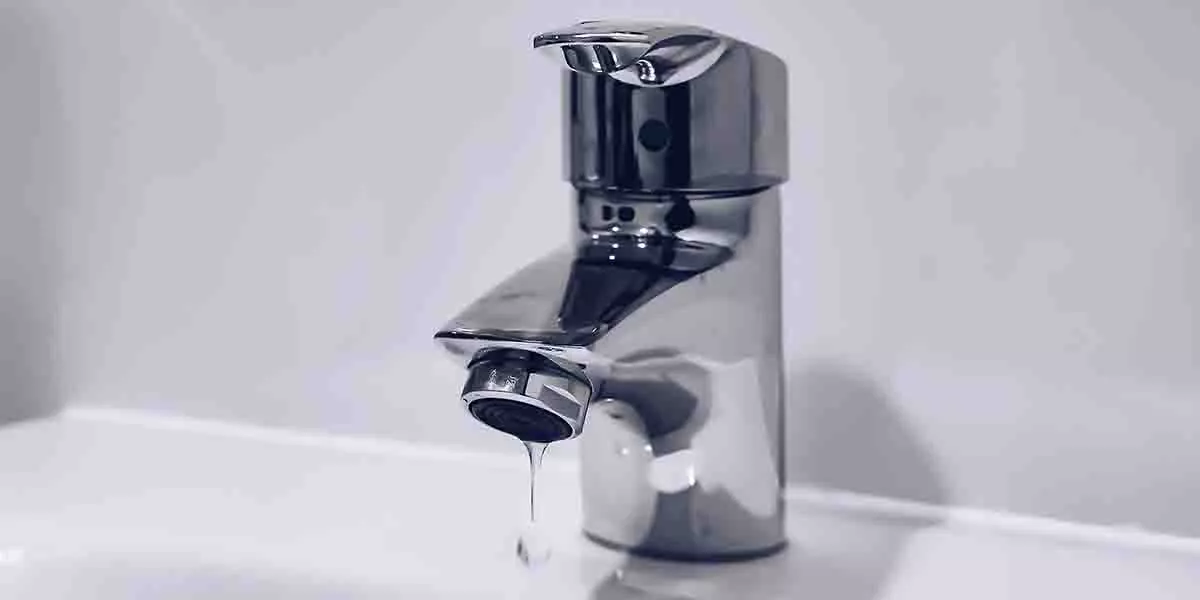Leaky faucets aren’t only a nuisance of constant plinking to keep you awake in the night. They’re also can be the reason why your water bills are so high.
According to EPA, leaky faucets account for up to 3000 gallons of water going down the drain, which is a substantial dent in your pockets.
However, the problem doesn’t just come out of the blue, but a long-standing problem in your faucet. That can be head-splitting to you if you aren’t familiar with your way around the faucet. So why does a faucet drip even after the water is turned off?
The main reasons your water faucets keep dripping after water turning it off are primarily due to damaged cartridges for twin handles, broken washers, and a malfunctioning O-ring. Still, your deteriorated valve seat and the water pressure compound the problem, making the leaks more persistent.
If anything, immediately fixing these issues would save you thousands of dollars in losses.
Here’s an insight into the reasons for your water faucet dripping after water is turned off:
7 Reasons Why Faucet Dripping After Water Turned Off

Worn-Out Washers
Friction between the valve seat and the faucet’s washer can wear them out, often breaking. That can be the most significant cause of persistent faucet leaking, and replacing it would only be viable. Also, compression faucets can induce pressure to the washers and cause wear out.
However, to find out, you must disengage the faucet since washers are tiny rubbers found at the base of the faucet.
Damaged Cartridges
This problem is typical for twin faucet handles that dispense cold and hot water. Usually, such faucets need a cartridge for dissipation, which on layman’s terms, are valves on both handles controlling water flow into the sprout.
Sometimes, it could be the entire reason why your faucet keeps dripping, and replacing it with a new one would solve the problem.
See Also | 5 Signs to Tell If A Faucet Cartridge Is Bad (Must-Read!)
O-ring Issues
The O-ring is an essential metal component that holds the sink’s handle in place and can be the reason why your faucet keeps dripping. The constant faucet movements during regular use can cause wearing off or loosening after a lengthy period.
Water can therefore find its way out through the damaged O-ring, and can that be nagging.
Usually, there’s no way around solving this issue other than replacing it with a new one when it’s worn. However, tightening it if it’s become loose can sometimes be a proper remedy.
Corroded Valve Seat
Over time, dirt material can build up in the faucet’s valve seat, causing corrosion. The valve seat is an integral component in the faucet, connecting it with sprout and can pretty much be the genesis of the leaks.
Sometimes, these sediments can accumulate around the valve seat leading, and cleaning it can fix the problem. You can do it yourself if you’re familiar with it or involve a plumber to get the work done for you.
Recommended | How to Replace Valve Seats
Excessive Water Pressure
Sometimes, technical issues can be the primary cause of the dripping problem even after turning your faucet off. Water pressure can play the part, forcing the faucet components to work beyond their might to hold water back.
Therefore, a little due diligence would be imperative to prevent you from engaging expensive plumbers or alleviate the hassle of dismantling your faucet.
If the dripping is only persistent during certain times of the day or is highly irregular, then your faucet is working extremely hard to contain the pressure.
Poor Seals
Seals permit free water flow and can also handle the stop when the faucet is off. That means that they’re constantly at work when the faucet is working, and that can subject it to damaging pressure.
Besides, scale buildup or sediment accumulation can also play a part in rendering the seal dysfunctional, leading to constant dripping.
Incompatible Washers
Usually, this problem should be apparent almost immediately after installing your faucet. However, that only shows up later when the other faucet components start wearing out and can’t hold the pressure anymore.
Large washers can be an apparent reason for faucets dripping, which can be head-splitting if you won’t figure that out fast enough.
Must Read | How to Find the Correct Replacement Washer for a Faucet
Here’s How to Fix A Faucet Dripping After Water Turned Off
While leaks are persistent and sometimes not easily fixable without being proficient at them, a professional can offer a hand.
However, if you’re confident with your way around operating faucets, you can do it yourself through the following steps:
Step 1: Engage the Shutoff Valve Before Disassembling Handles
It would be best to cut the water flow before embarking on the repairs, or else you won’t have an easy time doing it. Therefore, engage the shutoff valve before the sink by shutting it off.
If there aren’t any shutoff valves present, turn off the house’s primary water supply and get on with disassembling the handles.
Step 2: Remove the Valve Stem
The valve stem or cartridge could be smudged, and therefore, detaching and cleaning it would be more feasible.
However, if it’s entirely untouched, go ahead and pull it out to allow easy dissembling of the remaining faucet attachments, including the washer and O-ring for cleaning or replacement.
Step 3: Inspect And Replace Damaged Parts
Take a closer and scrutinized look at the faucet components, including the washer, O-ring, and seals, if any. Ensure that they’re all in good shape.
If they seem damaged, replacing them with new ones would be a more practical solution. If not, clean them using some rubbing alcohol before rinsing.
Step 4: Reassemble the Faucet
Once everything is clean, and the necessary replacements are available, finish off by reassembling the faucet. That should fix the problem, and if not, it’s possibly beyond your understanding.
That would suggest that you contact a plumber to help you remedy the problem. It is recommended to monitor the faucet closely for a day or two post the repairs before calling for help if necessary.
Wrapping It Up!
Water faucet dripping after water is turned off can be overly annoying, which means only one solution exists – fixing it.
Most faucets have a simple repair interface, and it should pretty much be a piece of cake for you. However, involving a professional would come in handy for the types that are more sophisticated or require adequate know-how around operating them.
Fixing your dripping faucet could save you a fortune because, as negligible as it seems, the cumulative impact is always immense.
Read More



